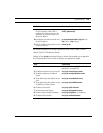
ADC Telecommunications, Inc.
290 C
HAPTER 14: CONFIGURING IP
Configuring RIP
This section provides instructions on how to configure Routing Information
Protocol (RIP) on an IP interface. Configuring RIP consists of the following
tasks:
■ Configuring RIP on IP Interfaces
■ Disabling RIP on IP Interfaces
■ Removing RIP from IP Interfaces
Before you can effectively perform these steps, however, you need to
understand certain concepts about RIP.
About RIP
RIP is a distance vector protocol that routers use to build their routing tables
dynamically. RIP bases its routing decisions on the distance (number of hops)
to a destination. Using RIP, a router requests all or part of the contents of
other routers’ routing tables. To reply to the requesting router, the other
routers send responses that contain the routing table entries.
Your system supports RIP version 2 as defined in RFC 1724. The Cuda 12000
can interoperate in a network of both RIPv1 and RIPv2 routers. A network
composed of RIPv1 and RIPv2 routers is useful in supporting the transition
from older routers to newer routers supporting RIPv2.
Configuring RIP on IP Interfaces
To exchange RIP routes over an interface, you must configure RIP on that IP
interface. After RIP is added to the interface, the Cuda 12000 begins to
exchange RIP routes with adjacent RIP routers.
“RIP v1 or RIPv2” mode is enabled on interfaces by default for reception.
“RIPv1 compatible” mode is enabled on interfaces by default for
transmission.
Before you can configure RIP, you must configure the IP interface on which
you want to run RIP. See “Configuring IP Addresses” on page 272 for more
information.


















